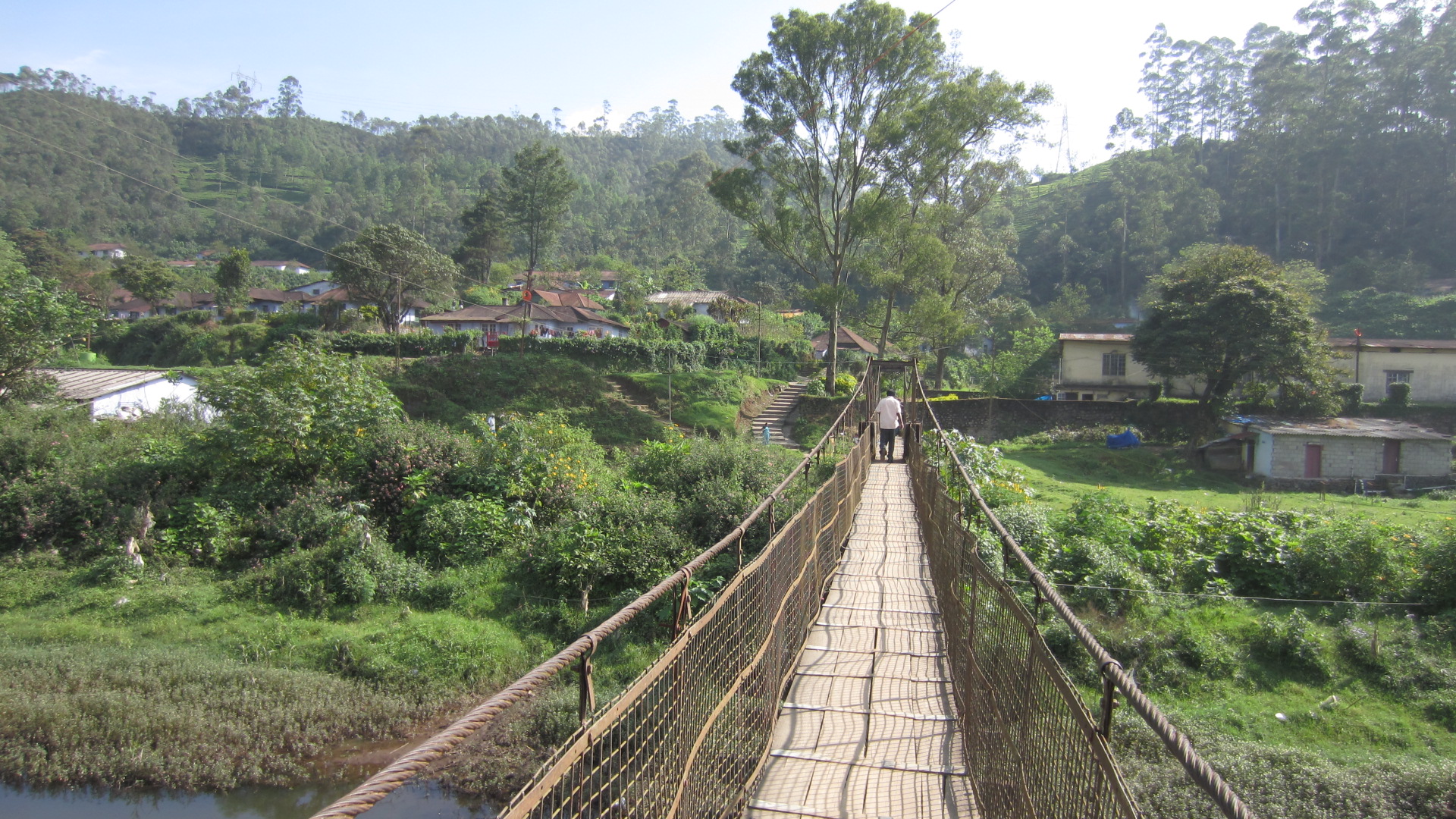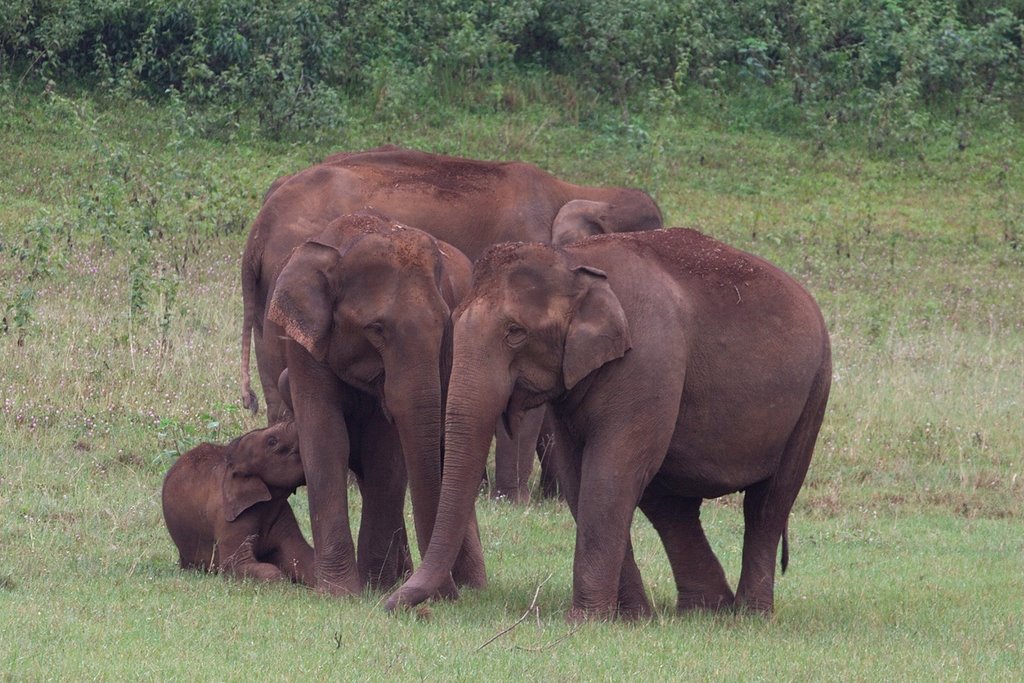 |
| Nilgiri tahr male, Eravikulam National Park, Kerala செல்வா (C.R. Selvakumar), CC BY 4.0, via Wikimedia Commons |
INTRODUCTION
Kerala, often celebrated as “God’s Own Country,” is renowned for its serene backwaters, lush hill stations, golden beaches, and centuries-old traditions.
Yet, beyond these well-known attractions lies another facet that makes Kerala an extraordinary travel destination—its remarkable wildlife and eco-tourism experiences.
Tucked between the Arabian Sea and the Western Ghats, Kerala boasts one of the richest biodiversity hotspots in the world. Its protected forests, national parks, and wildlife sanctuaries are home to a breathtaking variety of flora and fauna. From tropical rainforests to rolling grasslands, the state provides habitats for rare plants, exotic birds, and majestic animals like elephants and tigers.
For the eco-conscious traveler or the adventurous explorer, Kerala offers the perfect escape into nature’s lap. Here, you can trek through pristine forests, embark on wildlife safaris, listen to the calls of rare birds, or simply enjoy the peace of untouched wilderness. Let us journey through some of the state’s most enchanting wildlife reserves and eco-tourism hubs.
If any tourists need any help, here is the official website of the government of India to guide the domestic and foreign tourists: India Tourism Development Corporation (ITDC)
Silent Valley National Park: A Pristine Tropical Rainforest
 |
| Silent Valley, Munnar, Kerala Raman Patel, CC BY 3.0, via Wikimedia Commons |
Spread over 236 square kilometers, this park represents one of the last untouched tracts of tropical evergreen rainforest in India.
Its very name evokes a sense of mystery, as the dense canopy creates an eerie silence, broken only by the occasional chirping of birds or rustle of leaves.
The park is home to over 1,000 species of flowering plants, 128 species of butterflies, and nearly 400 species of moths. Rare orchids bloom in hidden corners, while towering trees form a green cathedral above. Among the animals that thrive here are the lion-tailed macaque, an endangered primate found only in the Western Ghats, as well as leopards, elephants, and Malabar giant squirrels.
Visitors can explore Silent Valley through guided treks and eco-tours, carefully managed to protect its fragile ecosystem. A trek to the Kunthi River, which flows through the park, offers stunning views of crystal-clear waters framed by dense forest. For nature photographers, this is a paradise of green landscapes and elusive wildlife.

Drashokk, CC BY-SA 4.0,
via Wikimedia Commons
A Malabar Grey Hornbill in flight.
Thattekad Bird Sanctuary: Paradise for Birdwatchers

via Wikimedia Commons
A Malabar Grey Hornbill in flight.
If you are a bird enthusiast, Thattekad Bird Sanctuary is a destination you cannot miss.
Often described as the richest bird habitat in peninsular India, it was the first bird sanctuary in Kerala, established in 1983 and designed under the guidance of the famous ornithologist Dr. Salim Ali.
Spread across 25 square kilometers in Ernakulam district, Thattekad is home to over 300 species of birds.
 |
| Thattekad Bird Sanctuary Shijan Kaakkara, CC BY-SA 4.0, via Wikimedia Commons |
The sanctuary also houses butterflies, reptiles, and small mammals, adding to its ecological richness.
The best way to experience Thattekad is through early morning guided birding trails. As the sun rises, the forest comes alive with a symphony of bird calls, creating an unforgettable atmosphere. The sanctuary’s proximity to Kochi makes it an easily accessible day trip for travelers.
Parambikulam Tiger Reserve: Into the Realm of the Big Cats
 |
| The stay is provided as part of the Parambikulam Tiger Reserve Tourism package. Athulvis, CC BY-SA 4.0, via Wikimedia Commons |
Recognized as one of the best-managed tiger reserves in India, it is a haven not only for tigers but also for leopards, wild boars, elephants, and spotted deer.
The reserve is also rich in plant life, with teak, rosewood, and sandalwood trees forming dense canopies. The famous Kannimara teak, believed to be the world’s largest living teak tree, is one of the highlights of the reserve.
Visitors can enjoy jeep safaris, bamboo rafting, and guided treks, each offering a different perspective of the forest. Staying in eco-friendly accommodations such as treehouses and forest lodges enhances the wilderness experience. For eco-tourists, Parambikulam also offers community-based tourism, where local tribal communities participate in managing and guiding tours, ensuring both conservation and livelihood opportunities.
Periyar Wildlife Sanctuary: Where Elephants Roam Free
 |
| Wild Indian Elephants in Periyar National Park, India. Sundar, CC BY 2.0, via Wikimedia Commons |
Spread across 925 square kilometers, Periyar is one of the most famous sanctuaries in South India and a highlight for travelers exploring Kerala’s hill stations.
The sanctuary is particularly known for its large population of wild elephants. Watching herds gather along the Periyar Lake is a magical experience.
Boat safaris on the lake allow visitors to see elephants, bison, sambar deer, and sometimes even tigers. The sanctuary also shelters over 300 species of birds, including the Malabar hornbill and the great Indian hornbill.
Beyond wildlife viewing, Periyar offers ecotourism activities like bamboo rafting, nature walks, and night trekking. The Periyar Tiger Reserve, part of the sanctuary, is also a critical conservation area under Project Tiger.

Indian Peacock
Praveenp, CC BY-SA 4.0, via Wikimedia Commons
Wayanad Wildlife Sanctuary: A Green Haven in the Hills
Praveenp, CC BY-SA 4.0, via Wikimedia Commons
Located in the northern district of Wayanad, this sanctuary forms part of the Nilgiri Biosphere Reserve.
It connects with Bandipur and Nagarhole National Parks in Karnataka and Mudumalai Wildlife Sanctuary in Tamil Nadu, creating one of the largest contiguous wildlife corridors in South India. Wayanad Wildlife Sanctuary is home to elephants, tigers, leopards, and gaur (Indian bison).
| Mrriyad, CC BY-SA 3.0, via Wikimedia Commons |
The lush forests and rolling hills provide excellent opportunities for jeep safaris and trekking.
Bird lovers will also find the sanctuary rewarding, with sightings of peafowls, babblers, and parakeets.
Wayanad itself is a hub for ecotourism, with attractions like Edakkal Caves, Banasura Sagar Dam, and scenic tea and coffee plantations.
For travelers who want a blend of wildlife and cultural experiences, Wayanad is a perfect choice.
Eravikulam National Park: The Land of the Nilgiri Tahr
 |
| Nilgiri tahr male, Eravikulam National Park, Kerala செல்வா (C.R. Selvakumar), CC BY 4.0, via Wikimedia Commons |
Spread across 97 square kilometers, this park is also home to shola grasslands, streams, and rolling hills that create stunning landscapes.
One of the major attractions here is the blooming of Neelakurinji flowers, which paint the hillsides purple once every 12 years. When in bloom, the spectacle attracts travelers from across the globe. The park is also rich in birdlife, butterflies, and small mammals, making it a biodiversity hotspot.
Guided treks in Eravikulam offer breathtaking views of the Anamudi Peak, the highest mountain in South India. For eco-tourists, this park is a must-visit to experience the unique flora and fauna of the Western Ghats.
Ayurveda – Healing the Mind and Body
Kerala is often regarded as the cradle of Ayurveda, India’s ancient system of holistic healing that has been practiced for more than 5,000 years. Rooted in the philosophy of balancing the body, mind, and spirit, Ayurveda in Kerala is not merely a form of treatment but a way of life. The state’s tropical climate, abundant medicinal plants, and long tradition of Ayurvedic practitioners make it one of the best destinations in the world to experience authentic therapies.
Across Kerala, from luxury resorts along the backwaters to serene retreats tucked away in the hills, Ayurvedic centers offer a wide range of treatments. These include rejuvenating massages with warm herbal oils, detoxification programs such as panchakarma, and therapies for stress relief, skin ailments, joint pain, and lifestyle disorders. Each treatment is personalized, based on the individual’s body type (dosha) and specific health needs, ensuring holistic healing rather than just temporary relief.
Visitors often spend a few days or even weeks immersed in Ayurvedic programs, combining treatments with yoga, meditation, and a wholesome diet. The result is a sense of renewal—physically energized, mentally calm, and emotionally balanced. For those seeking natural wellness and a deeper connection with their inner self, Kerala’s Ayurveda is truly a transformative journey.
Eco-Tourism Initiatives in Kerala
What makes Kerala stand out as a wildlife and ecotourism destination is not just its biodiversity but also its commitment to sustainable tourism. Many sanctuaries and parks involve local communities in managing resources, guiding tours, and providing accommodations. This ensures that tourism benefits both conservation efforts and the livelihoods of local people.
Eco-lodges, homestays, and tribal village tours allow visitors to immerse themselves in the culture while minimizing their ecological footprint. Activities such as bamboo rafting, trekking, and birdwatching are designed to have a low impact on the environment while offering enriching experiences for travelers.
Kerala Tourism has also implemented responsible tourism initiatives, ensuring that natural habitats are protected while travelers can enjoy authentic and meaningful experiences.

Luxury Hotel
ArchKarl, CC BY-SA 4.0, via Wikimedia Commons
Practical Travel Tips for Wildlife Tourism in Kerala

ArchKarl, CC BY-SA 4.0, via Wikimedia Commons
-
Best Time to Visit: The ideal months for wildlife tourism are from October to March, when the weather is pleasant and animals are more active. Monsoon months (June–September) bring lush greenery but can make trekking difficult.
-
Getting There: Kerala is well-connected by air, rail, and road. Major airports include Kochi, Trivandrum, and Calicut. Most sanctuaries are accessible by road from nearby towns.
-
Stay Options: Choose eco-friendly lodges, forest guesthouses, or homestays to minimize your impact on the environment.
-
Permits and Guides: Many parks require entry permits and trained guides for safaris and treks. Booking in advance ensures a smoother experience.
-
Safety: Always follow park rules, avoid littering, and maintain a safe distance from wildlife. Respecting nature is the key to a fulfilling ecotourism journey.
Conclusion: Kerala—A Symphony of Nature and Conservation
 |
| Kerala Food Specialities - Onam Amjithps, CC BY-SA 4.0, via Wikimedia Commons |
While you are in Kerala, do not forget to taste the wonderful dishes of Kerala, specially the dishes which are cooked during the festivals, like Onam.
From the silent rainforests of Silent Valley to the bird-rich forests of Thattekad, from tiger safaris in Parambikulam to elephant herds in Periyar, the state offers experiences that stay etched in memory for a lifetime.
Eco-tourism in Kerala is not just about watching animals; it is about understanding the delicate balance of ecosystems, supporting local communities, and becoming a part of nature’s grand symphony. For travelers seeking adventure, peace, or a deeper connection with the Earth, Kerala’s forests and sanctuaries offer a journey like no other.
No comments:
Post a Comment